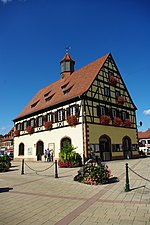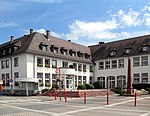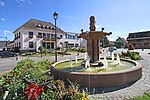Canton of Bischwiller
Bas-Rhin geography stubsCantons of Bas-RhinPages with non-numeric formatnum arguments

The canton of Bischwiller is an administrative division of the Bas-Rhin department, northeastern France. Its borders were modified at the French canton reorganisation which came into effect in March 2015. Its seat is in Bischwiller. It consists of the following communes:
Excerpt from the Wikipedia article Canton of Bischwiller (License: CC BY-SA 3.0, Authors, Images).Canton of Bischwiller
Rue de l'Église, Haguenau-Wissembourg
Geographical coordinates (GPS) Address Nearby Places Show on map
Geographical coordinates (GPS)
| Latitude | Longitude |
|---|---|
| N 48.77 ° | E 7.86 ° |
Address
Rue de l'Église 4
67240 Haguenau-Wissembourg
Grand Est, France
Open on Google Maps








